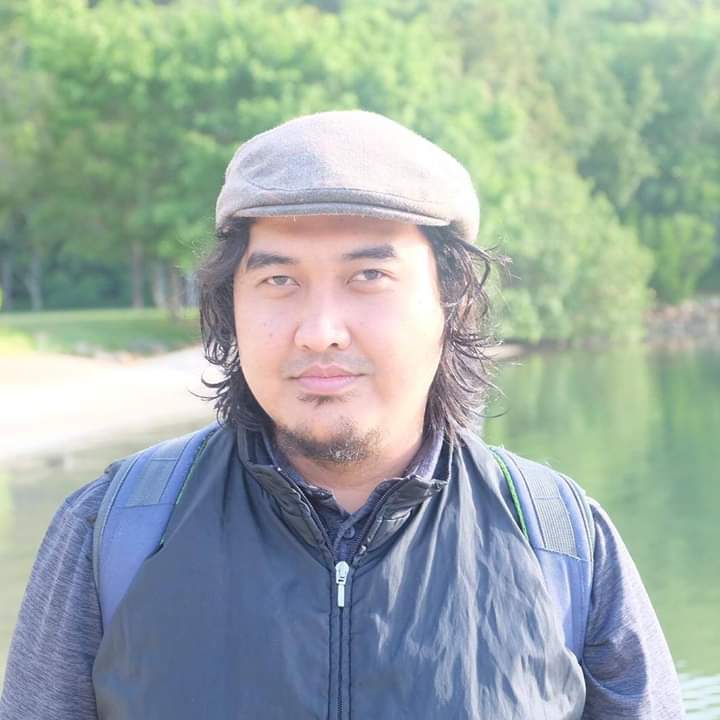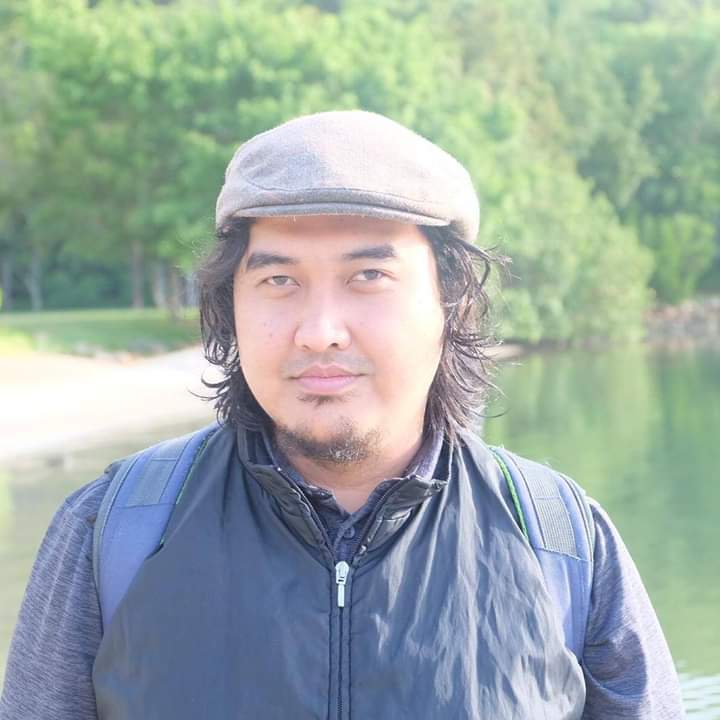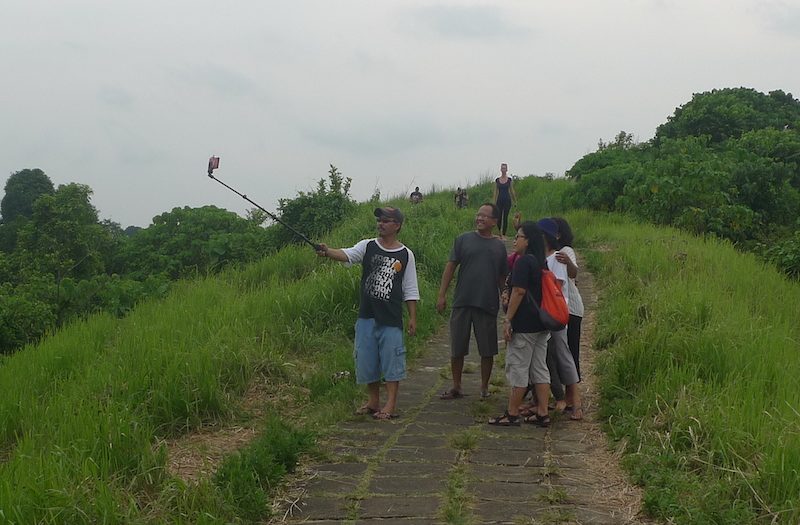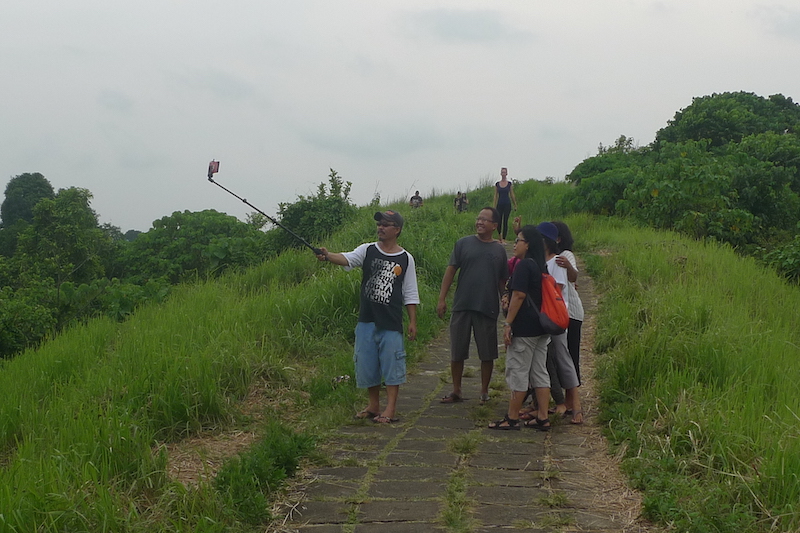Apa Agenda Sains dalam Lingkup Lokal Kita?
Siasat berbincang dengan Ahmad Rizky M.Umar (Umar). Kami bertanya tentang kegemarannya akan Postcolonial Theory dan bagaimana seharusnya perspektif itu dipahami dari sudut pandang hari ini, terutama oleh para ilmuwan Indonesia.

Siasat: Yang bikin dirimu suka membaca kajian dengan perspektif poskolonial itu apa?
Umar: Kalau saya sebenarnya suka dengan perspektif poskolonial ini pertama terkait dengan riset, karena disertasiku yang sekarang dan riset Masterku dulu itu kebetulan bicara tentang Sejarah Asia Tenggara. Sekarang kan sudah diperluas menjadi sejarah Asia.
Kebetulan riset PhD-ku ini melacak sejarah ide tentang Asia, di mana kalau kita bicara sejarah ide tentang Asia, salah satu bagiannya itu pasti akan bicara tentang kolonialisme, apakah itu kolonialisme Eropa maupun kolonialisme Jepang di tahun 1942 sampai 1945 sehingga kemudian dalam banyak hal, ketika kita bicara tentang pemikiran politik di Asia Tenggara pada khususnya, itu kita pasti akan bicara tentang kolonialisme.
Lalu kemudian saya jadi tertarik untuk melihat bagaimana kemudian sebenarnya pemikir-pemikir Indonesia itu bicara dengan perspektif yang sangat khas sebagai sebuah subyek yang pernah mengalami proses kolonialisasi. Nah, ini sebenarnya asal usul dari risetnya adalah riset Masterku tentang sejarah Kedaulatan, sejarah Negara di Asia Tenggara.
Ini kemudian mengantarkanku pada bacaan dari beberapa pemikir. Poskolonialisme itu kan sebenarnya ada banyak varian ya, ada varian India yang paling kuat, yang paling terkenal, kelompok Postcolonial studiesnya Ranajit Guha, terus kemudian ada perspektif dekolonial yang sekarang lagi banyak berkembang, terutama untuk menjelaskan Afrika dan Amerika Latin, plus Orientalisme Edward Said yang sebenarnya itu sangat fundasional. Itu mengapa sebenarnya saya suka awalnya dengan kajian poskolonialisme.
Siasat: Tadi kan dirimu menyebut Orientalisme Edward Said. Yang kita tahu, yang kita lihat di Indonesia ini, orang terbatas memahaminya sebagai sebuah kritik sastra. Nah, dirimu sebagai peneliti Hubungan Internasional (HI), itu bisa menemukan bacaan-bacaan yang tadi kamu sebut itu darimana? Apa memang di silabusnya dulu sudah ada di Ilmu S1, atau bagaimana?
Umar: Pertama kali membaca Orientalisme, dari S1 sebenarnya. Hanya saja kan perspektifnya studi politik secara umum, jadi sebenarnya bukan menyentuh ranah HI yang terlalu spesifik, tapi sebenarnya saya mendapatkan ini di HI justru ketika S2. Kebetulan pengajar saya ketika S2 untuk mata kuliah Filsafat dan Metodologi Riset Sosial itu antusias dengan kajian feminis poskolonial. Dia yang memperkenalkan. Bukan hanya Said, tapi juga pemikir-pemikir decollonial Amerika Latin dan Afrika sehingga kemudian perspektif kita yang tadinya melihat Orientalisme sekedar studi sastra, itu kemudian menjadi lebih berkembang.
Siasat: Kalau dibandingkan dengan mazhab-mazhab lain yang digeluti oleh akademisi Indonesia, ada kesan mazhab poskol kalah langkah dari pemikiran lain. Apa sih kira-kira menurutmu sendiri, kenapa ini tidak terlalu begitu digunakan, atau diakui bahkan?
Umar: Bisa jadi pertama karena metode dari Ilmu Sosial di Indonesia itu kan sangat, orientasinya sih menurut bahasa saya, sangat birokratis. Jadi ketika kita melakukan riset sosial, kita mengambil riset dalam kacamata yang pertama sangat, orientasinya adalah berjarak. Yang kedua, kita mengambil metodologi dengan perspektif yang sangat positivistik. Dalam HI misalkan, ketika saya semester awal, yang saya pelajari justru adalah perspektif yang berkembang di Amerika di tahun 1970-an dan tahun 1980-an, dan itu menjadi buku panduan, guidelines wajibnya.
Orang bicara HI, ya bicara soal hubungan antara Negara. Nah, perspektif ini kan sebenarnya sangat dipengaruhi oleh cara pandang official, cara pandang resmi Negara, terutama Negara Orde Baru 70an-80an untuk memandang fenomena sosial di Indonesia. Nah, sehingga kemudian, perspektif yang sangat dominan dalam ilmu sosial dan ilmu politik di Indonesia itu jadi sangat, narasi yang sangat Amerika, ini yang kemudian yang membuat perspektif post collonial yang sebenarnya itu juga punya akar yang sangat kuat dalam sejarah pemikiran politik Indonesia menjadi terkesampingkan.
Siasat: Dan memang sedikit susah mencari ilmuwan Indonesia yang konsisten dengan perspektif poskol. Dalam pandanganmu gimana?
Umar: Sebenarnya ada beberapa. Di antara intelektual Indonesia setelah tahun 70an, memang agak jarang. Agak jarang ini bisa jadi karena di tahun 70an ke bawah, ilmu sosial itu kan didefinisikan oleh ilmuwan yang berada di kampus, jadi sangat sempit dalam memandang problematika sosial.
Nah, ada beberapa orang seperti Profesor Sartono Hartodirjo, atau Profesor AB Lapian di UI misalkan, nah Ilmu Sejarah, mereka sebenarnya mencoba untuk memperkenalkan apa yang disebut sebagai perspektif Indonesiasentris. Dalam beberapa hal, ini sebenarnya sudah membangun fondasi kajian. Tapi kalau kita lihat kajian-kajian sejarah, terutama yang dikembangkan oleh murid-murid Profesor AB Lapian atau Profesor Sartono Kartodirdjo, tidak banyak yang kemudian mengupas problem kolonialisme dan warisannya di Indonesia, sehingga narasinya menjadi sangat anti barat, dan dalam beberapa hal, anti asing.
Ini yang kemudian, tulisan-tulisan Ariel Harianto beberapa hal sebenarnya sudah mengkritik tendensi ini, tapi ya akhirnya kemudian gagasan tentang ilmu sosial Indonesia itu menjadi sangat nativis, menjadi sangat menekankan narasi keaslian Indonesia, tidak kemudian melihat bahwa ada proses kolonialisasi yang kemudian diwariskan. Ini menyebabkan agak sedikit susah untuk kemudian melihat perspektif poskolonial dalam Ilmu sosial Indonesia.
Siasat: Menarik, bahwa dirimu sudah melihat bagaimana yang lebih sering diangkat lebih seperti perspektif anti baratnya. Di periode sekitar 80an-90an, Pak Ignas Kleden sempat mewacanakan soal indiginesisasi ilmu sosial. Adakah kesan yang dirimu tangkap dari diskusi itu dan apa yang kira-kira bisa kita diskusikan kembali dari pembahasan mereka di periode itu?
Umar: Kalau saya lihat di debat-debat 80an-90an, dari gagasan indiginesasi ilmu sosial yang kemudian mencuat adalah gagasan tentang pribumisasi. Gagasan ini positif, dalam artian sebenarnya ini menunjukkan kita perlu mendorong perspektif ilmu sosial yang mengakar pada tradisi Indonesia, dan ini sebenarnya sudah cukup positif.
Ada dua catatan kalau menurut saya ya dari perdebatan ini. Yang pertama adalah perdebatan ini terbatas pada perdebatan intelektual publik pada masa itu, dalam artian, ini sebatas perdebatan kaum intelektual yang kemudian tidak diikuti oleh agenda riset yang sifatnya lanjutan.
Ini menunjukkan sebenarnya ada problem kedua yaitu kita perlu yang namanya agenda riset dan metodologi yang lebih untuk kemudian mendorong agenda riset yang lebih besar. Nah, ini yang kemudian, kalau menurut saya, yang sedikit missing itu ada disini.
Siasat: Kembali ke contoh indiginesasi ilmu sosial, itu kan sebenarnya bisa dibilang, perdebatannya menguap begitu saja tanpa konklusi, tanpa kelanjutan. Tapi ya itu pernah mewarnai ilmu sosial di Indonesia. Masih ada kah relevansinya untuk sekarang menurutmu?
Umar: Masih relevan, hanya kita belum mendorong dengan arah yang berbeda. Arah yang berbeda dalam artian, kita tidak lagi hanya melihat indiginesasi ilmu sosial itu sebagai wacana kritik, tapi sebagai ajang untuk mengekspos sejarah lokal Indonesia, tradisi pemikiran Indonesia yang kemudan berkembang, dan itu digunakan untuk melihat, untuk membaca fenomena sosial di Indonesia saat ini. Bukan hanya fenomena sosial di Indonesia, tapi juga fenomena global.
Nah, misalkan kalau kita ingin melihat indiginesasi ilmu sosial, kita bukan hanya mengkritik hegemoni literatur barat yang ada dalam wacana ilmu sosial di Indonesia, tetapi juga mendorong. Kalau kita ingin serius, bagaimana misalkan kita bisa mendorong tradisi pemikiran, katakanlah kemudian Pramoedya Ananta Tur, untuk kemudian membaca konteks sastra dalam konteks global misalkan. Atau misalkan kita bisa menggali beberapa pemikiran khas, pemikiran sosial Indonesia di ilmuwan-ilmuwan sosial tahun 90an atau tahun 2000an awal misalkan, nah ini yang kemudian bisa didorong.
Siasat: Terkait ini, ada contoh tentang Syekh Farid Alatas yang setelah menjabarkan pentingnya diskursus alternative, justru kemudian membesarkan pemikiran Ibnu Khaldun. Apakah menurutmu ini langkah yang tepat?
Umar: Mungkin bagus, hanya Ibnu Khaldun kan lagi-lagi perlu kita baca sebagai seorang ilmuwan yang hidup di masa lalu. Pertama, hidup di masa lalu. Kedua, hidup dalam kondisi sosial masyarakat Timur Tengah, dalam hal ini, nah saya tidak tahu, karena perspektif poskolonial kan sangat kritis dengan narasi besar. Kalau bicara untuk menteorisasikan segala sesuatu, kan tidak kemudian menteorisasikan hal yang gede, terus kemudian kita turunkan dibawah, kan logikanya harusnya kita harus menempatkan sesuatu tuh ada konteks sosial, konteks tertulis, konteks budaya. Nah, mungkin justru kalau project Syekh Farid Alatas, itu justru yang bisa didorong itu bukan Ibnu Khaldunnya, tetapi semangat untuk memahami konteks kemelayuan dengan cara pandang para orang-orang Melayu yang bergerak di lapangan sendiri, walaupun itu nanti akan…sebenarnya kan konsepsi kemelayuan sendiri juga punya pakemnya, tapi at least itu sebagai awal lah ya.
Siasat: Tapi kalau misalnya orang menyederhanakan wacana poskol itu jadi seolah-olah ilmuwan lokal versus ilmuwan Barat, itu menurutmu tepat tidak?
Umar: Masalahnya adalah ilmuwan poskolonial itu terjejaringnya secara global, beberapa orang yang ada di barat juga melakukan kritik juga sebenarnya, sehingga agak kurang tepat ketika kita melihatnya menyederhanakannya sekedar ilmuwan lokal versus ilmuwan barat.
Mungkin dalam beberapa hal penting untuk mendorong ilmuwan lokal untuk kemudian tampil menyuarakan perspektifnya, dan ini sebenarnya agenda yang dibawa oleh banyak ilmuwan poskolonial, dalam segi HI terutama, untuk kemudian melihat aspek yang lebih lokal.
Masalahnya adalah, melihat aspek yang lebih lokal itu kemudian tidak bisa disimplifikasi hanya sekedar ilmuwan asing versus ilmuwan lokal karena dalam banyak hal, cara berpikir ilmuwan lokal pun juga sebenarnya dipengaruhi dan diwarisi oleh warisan-warisan mungkin ilmu sosial yang berkembang di barat, dan yang kedua adalah, ilmu sosial yang ada di barat pun sangat dinamis.
Kemudian, kalau menurut saya tidak ada masalah kalau kita melihatnya sebagai ajang untuk mendorong ilmuwan lokal, tapi yang perlu dilihat adalah bukan sekedar mendorong ilmuwan lokal untuk bicara lebih banyak, tapi sebenarnya apa sih yang ingin diagendakan, dibicarakan oleh ilmuwan lokal. Dan yang kedua adalah, warisan-warisan perspektif lokal ini perlu diurai kompleksitasnya, karena dalam banyak hal, sejarah pemikiran politik Indonesia, itu juga dipengaruhi oleh tradisi Eropa. Kalau kita bicara pemikirannya Soekarno, Soekarno juga dalam banyak hal terpengaruhi oleh nasionalisme progresif di Eropa abad ke-20. Nah, kita melihat link-link seperti ini yang kemudian perlu didorong, seperti itu sih.
Siasat: Sebagai pertanyaan penutup, menurutmu, apa yang bisa kita pelajari dari pendekatan poskolonial, misalkan dari kelompok pemikir Subaltern dari Asia Selatan (India) dalam hal metode, motivasi?
Umar: Yang saya lihat, pemikir-pemikir poskolonial India ini sangat kuat dalam dua hal. Pertama adalah, mereka sangat kritis terhadap relasi kekuasaan. Kedua adalah, mereka sangat punya semangat untuk melihat fenomena di India sendiri dengan kacamata orang-orang India sendiri. Misalnya kajiannya Ranajit Guha kan sangat kuat dengan perspektif yang dia sebut sebagai perspektif sub altern untuk melihat perlawanan petani di India. Ini juga ada debatnya sebenarnya.
Ada beberapa kritik, misalkan dari Vivek Chibber dan beberapa pemikir Marxis yang bilang, ini sebenarnya kan masalah kapital. Tapi yang dilihat Ranajit Guha kan sebenarnya adalah bagaimana kita melihat perlawanan petani itu bukan dengan kacamata helikopter, tapi lihat apa sih ide-ide yang dibawa oleh orang-orang yang menggerakkan perlawanan dibawah.
Nah, perspektif itu yang kemudian saya kira bisa kita pelajari untuk melihat, misalkan kalau kita ingin bicara tentang sejarah politik luar negeri Indonesia, ya kita melihatnya juga perlu untuk melihat referensi apa sih yang kemudian dipakai oleh para pengambil keputusan di Indonesia. Seperti itu.**

Umar adalah kandidat Ph.D dalam Political Science and International Studies, di University of Queensland, Australia.








